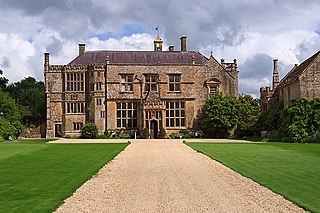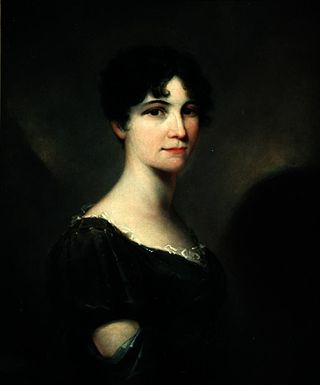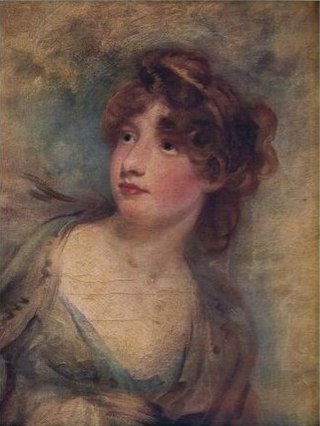
Earl of Westmorland is a title that has been created twice in the Peerage of England. The title was first created in 1397 for Ralph Neville. It was forfeited in 1571 by Charles Neville, 6th Earl of Westmorland, for leading the Rising of the North. It was revived in 1624 in favour of Sir Francis Fane, whose mother, Mary Neville, was a descendant of a younger son of the first Earl. The first Earl of the first creation had already become Baron Neville de Raby, and that was a subsidiary title for his successors. The current Earl holds the subsidiary title Baron Burghersh (1624).

John William Ponsonby, 4th Earl of Bessborough, PC, known as Viscount Duncannon from 1793 to 1844, was a British Whig politician. He was notably Home Secretary in 1834 and served as Lord Lieutenant of Ireland between 1846 and 1847, the first years of the Great Famine.

John Fane, 10th Earl of Westmorland,, styled Lord Burghersh between 1771 and 1774, was a British Tory politician of the late 18th and early 19th centuries, who served in most of the cabinets of the period, primarily as Lord Privy Seal ultimately spending 33 years in office.

Major Henry Somerset, 7th Duke of Beaufort, KG, styled Earl of Glamorgan until 1803 and Marquess of Worcester between 1803 and 1835, was a British peer, soldier, and politician.

George Child Villiers, 5th Earl of Jersey, GCH, PC, previously George Villiers and styled Viscount Villiers until 1805, was a British courtier and Conservative politician from the Villiers family.

George Bussy Villiers, 4th Earl of Jersey, PC was an English nobleman, peer, politician and courtier at the court of George III.

Brympton d'Evercy, a grade I listed manor house near Yeovil in the county of Somerset, England, has been called the most beautiful in England. In 1927 the British magazine Country Life devoted three articles to it, in which Christopher Hussey, near the start of a 50-year career as an architectural authority, termed it "the one which created the greatest impression and summarises so exquisitely English country life qualities." His articles remain the only detailed account of the house, which has belonged to six families: the D'Evercys, Stourtons, Sydenhams, Fanes, Weeks (1992–2008), and Glossops.

Frances Villiers, Countess of Jersey was a British courtier and Lady of the Bedchamber, one of the more notorious of the many mistresses of King George IV when he was Prince of Wales, "a scintillating society woman, a heady mix of charm, beauty, and sarcasm".

Sarah Sophia Child Villiers, Countess of Jersey, born Lady Sarah Fane, was an English noblewoman and banker, and through her marriage a member of the Villiers family.

Sarah Anne Fane, Countess of Westmorland was an English noblewoman.

Frederick Ponsonby, 3rd Earl of Bessborough, styled the Viscount Duncannon from 1758 to 1793, was an Anglo-Irish peer.

Harriet Arbuthnot was an early 19th-century English diarist, social observer and political hostess on behalf of the Tory party. During the 1820s she was the closest woman friend of the hero of Waterloo and British Prime Minister, the 1st Duke of Wellington. She maintained a long correspondence and association with the Duke, all of which she recorded in her diaries, which are consequently extensively used in all authoritative biographies of the Duke of Wellington.

Thomas Fane, 8th Earl of Westmorland was an English politician and peer. He was an ancestor of the writer George Orwell.
John George Brabazon Ponsonby, 5th Earl of Bessborough PC, styled Viscount Duncannon from 1844 until 1847, was a British cricketer, courtier and Liberal politician.

Fulbeck is a small village and civil parish in the South Kesteven district of Lincolnshire, England. The population taken at the 2011 census was 513. The village is on the A607, 9 miles (14 km) north from Grantham and 8 miles (13 km) north-west from Sleaford. To the north is Leadenham, and to the south, Caythorpe.
Fane is an English surname of Welsh origins that belongs to a family who have produced a number of notable members. The family originated with Ivon Vane, who was a Welsh landowner and mercenary captain in the service of the Black Prince. Ivon Vane or John Fane, as he was known in English, was one of three captains who captured King John II of France at the battle of Poitiers 1356. He was knighted and shared in the ransom monies, which made him very wealthy. He settled in Kent and founded the two notable families of Fane, whose members became the Earls of Westmoreland, and Vane, who became the Earls of Darlington. Both families have golden gauntlets on their crest in memory of the surrender of King John.

Sir Spencer Cecil Brabazon Ponsonby-Fane, was an English cricketer and civil servant. He was born in 1824 in Mayfair, the sixth son of John Ponsonby, 4th Earl of Bessborough.

Priscilla Anne Fane, Countess of Westmorland, styled Lady Burghersh between 1811 and 1841, was a British linguist and artist.

Jane Fane, Countess of Westmorland, formerly Jane Saunders, was the second wife of John Fane, 10th Earl of Westmorland.
Maria Ponsonby, Viscountess Duncannon, formerly Lady Maria Fane, was the wife of John Ponsonby, 4th Earl of Bessborough. She died before he inherited the earldom and thus was never Countess of Bessborough, but three of her sons were successively earls of Bessborough.

















